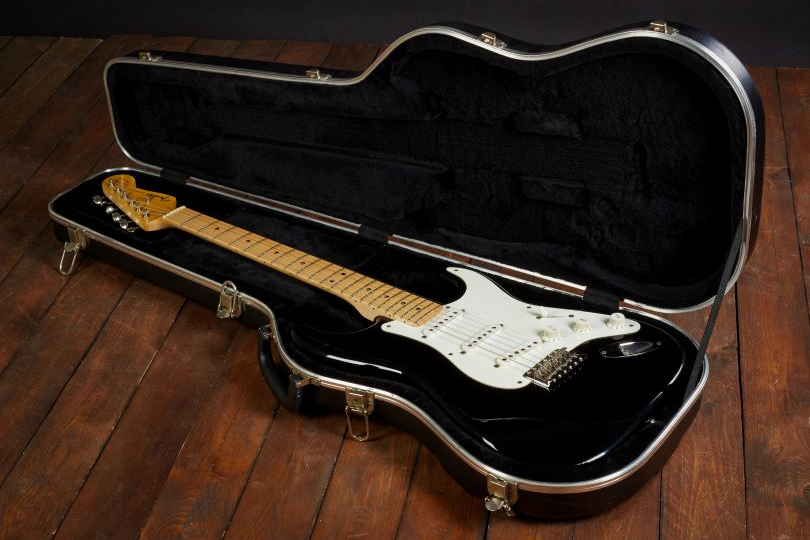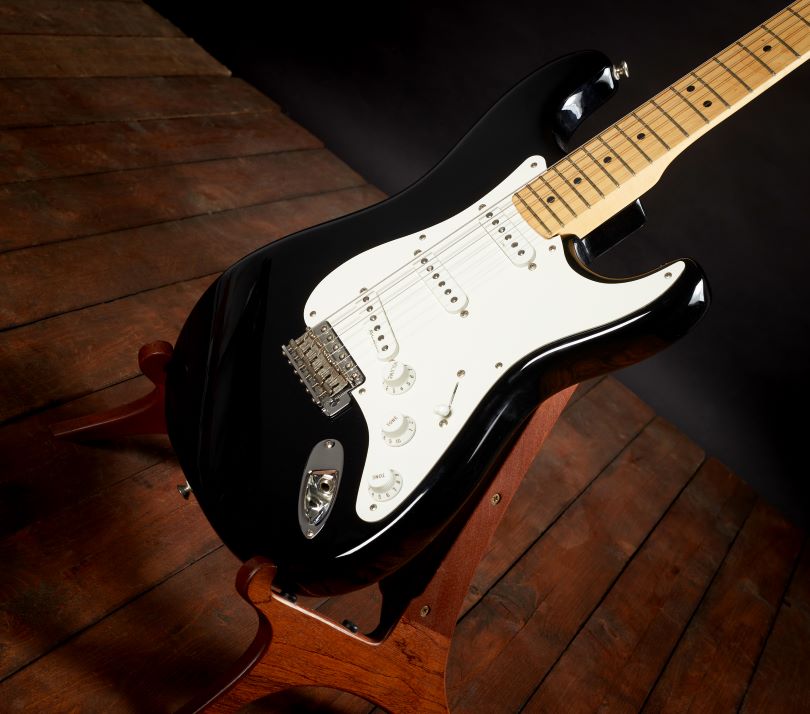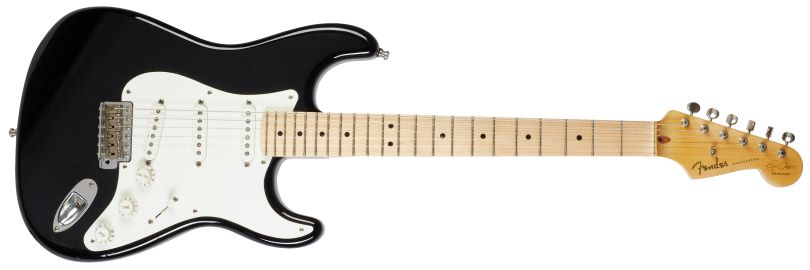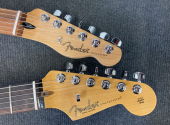
Under the Hood #24: Fender and the First Signature Guitar of Eric Clapton
The era of Dan Smith, who joined Fender in 1981, saw a number of changes. First and foremost, it was a complete reinvention of the standards and quality of production in the factory, followed by the formation of Fender Japan, which kept Fender afloat for a few years before American production picked up. In 1987, the Fender Custom Shop came along and brought a new concept of guitars that were both high-quality and made to customers' specifications. And to take it even further, Fender began producing signature guitars in 1988. And the first was a model based on Eric Clapton.
After listing all these changes, it's clear where Fender wanted to go. The new management started focusing on the customer and their personal preferences, as it used to be in the early days of Leo Fender.
Japanese production was making guitars based on popular models from the golden era. They wanted to give new musicians a touch of the good old classics and quality, but in a new way. Vintage and reissue models were becoming increasingly popular, partly because Japanese production was achieving surprising quality.
When the new factory in Corona was fully up and running, Fender introduced the American Standard series of guitars which would shape the direction of modern Fender for many years to come. It involved new desired elements combined with classic looks. These guitars featured a more modern fretboard radius, different frets, modern pickups, a modern tremolo bridge held in place by two screws and added many details that guitarists demanded.
The Fender Custom Shop brought guitars closer to the most demanding customers. These were high-quality models that were made using the old tried and tested methods, with no mass production. On the contrary, the emphasis was on quality and customer-specific requirements.
And somewhere between American Standard and Custom Shop, between modern, mainstream quality and super quality, the signature models of famous guitarists started in 1988.
This idea was born out of the need for a guitarist to be able to get closer to his idol. At the same time, the new signature model became firmly associated with the Fender brand.

What the Clapton model was based on
Among guitarists, Clapton was already known for his two Stratocasters, named Blackie and Brownie. The story of both guitars and the subsequent creation of Eric's model is described in Tony Bacon's article. The Blackie and Brownie played a vital role in Clapton's career. They were his favourite and most comfortable guitars to play. And that's why Fender later based its first signature model on them.
The Brownie was a 1956 Fender Stratocaster that Clapton bought in 1967. For a while, it looked like Clapton might become a Gibson player, but it was the Stratocaster that finally caught his eye. As he recalled, he saw Buddy Holly with a Strat in 1958 and knew immediately that it was his future. The Brownie was a classic model in a sunburst finish, more brown in appearance.
In 1970, Clapton bought several old Stratocasters and used them to assemble a new one, which he then played as his lead guitar for the next fifteen years. It was a black Stratocaster. However, years of live and studio playing had taken their toll on the Blackie and a new model was needed in the mid-1980s. This coincided perfectly with Fender's efforts to start producing signature models. Subsequently, Eric discussed everything with Dan Smith.
There's a nice article on the Eric Clapton fan site that describes the beginning of the story. At the time, they were thinking about the final parameters of the Clapton special. Dan Smith asked Eric what his dream guitar should be and what he would base it on. The answer was clear: Blackie.
Neck development turned out to be the biggest challenge. What Clapton valued most about his Stratocasters was the comfort of playing. He demanded that his new model have a neck exactly to his liking. Dan Smith and George Bland made a dozen necks and had Eric play them so he could choose the best one.
In The Stratocaster guitar book, Tony Bacon quotes from an interview with Bland. You can read that Clapton picked two necks out of a dozen that he couldn't decide between. One was the size of his pre-war Martin with a big V profile. The other had a soft V profile which meant less sharp edges. This neck most closely resembled the Blackie Stratocaster, as the Blackie had undergone several refrettings and its profile had thinned quite a bit, giving it its uniqueness.
A few years before that, Fender had given Clapton a new Elite Strat model with an active circuit. Clapton immediately liked its sound. With this in mind, Bland and Smith sent Clapton several prototype guitars with necks that he chose. This was in 1986 when Clapton was recording an album in Los Angeles. Blanda described it as a long period when they had no feedback from Eric. But at one point, there was a problem with one of the prototypes that Eric played the most. So he sent the guitar back to Fender for repairs. It happened to be the model with a pre-war Martin deep V neck. After the repair, when Blanda and Smith wanted to send the guitar back, Clapton said that during that time he had started to use the Blackie-like soft V-neck model more and that he had decided he wanted to play only that model.
That settled everything and the first signature model could be completed. But Clapton wanted to boost the sound. The first prototype had a boost function of 14db, but that wasn't enough for Eric. The second prototype had a boost of 25db. This model eventually caught on and went into production. It had three Lace Sensor pickups. The boost was controlled by the bottom rotary potentiometer with steps, so it was easy to correct. When the potentiometer was at maximum, the tonal characteristics were similar to the Gibson Les Paul model. The electronics were active and had to be battery-powered.
The tremolo was classic, but blocked and specifically set up for Eric's needs. He didn't use a vibrato bar, so the bridge was blocked with five springs at the back of the guitar body. This begs the question of why a hardtail design, i.e. with a fixed headstock, was not chosen for this model. That's because Clapton doesn't like the sound of hardtail Stratocasters. He prefers the sound of guitars with a tremolo system.

Specifications of Clapton Special
First version 1988-2001
- all-oak neck with twenty-two frets, adjustable end brace at the end of the neck, single string guide and Eric Clapton's signature on the headstock
- three optional body colours (at Clapton's request, black was not a colour option, it only became one in 1991)
- three pickups Lace Sensor
- five-position pickup switch, volume control and dual tone controls with TBX circuit, active electronics circuit with 25db boost
- single layer white pickguard
- classic tremolo bridge mounted with six screws
Second version since 2001
- three pickups Noiseless
- other specifications identical to the first version
Custom Shop model since 2004
- three pickups Noiseless
- Custom Shop logo on the headstock
- Eric Clapton's signature on the headstock
- without active circuit
To conclude
Eric Clapton's Signature model exemplifies the modern thinking of the era around Dan Smith. Thanks to this and several other Signature models, Fender guitars got closer to their users as they were more connected to the personality of famous musicians and consequently to their fans. In addition, they were high-quality guitars worth trying.
On the other hand, the downside of these models is that they are custom-made to fit specific guitarists' hands, preferences and abilities. So other players might not always be comfortable with specific neck profiles, for example. But whatever, it is a signature model.
And that's what it's all about, for new guitarists to experience first-hand the preferences of professional players and to be forced to deal with these details and find their own way.
If you have found an error or typo in the article, please let us know by e-mail info@insounder.org.


